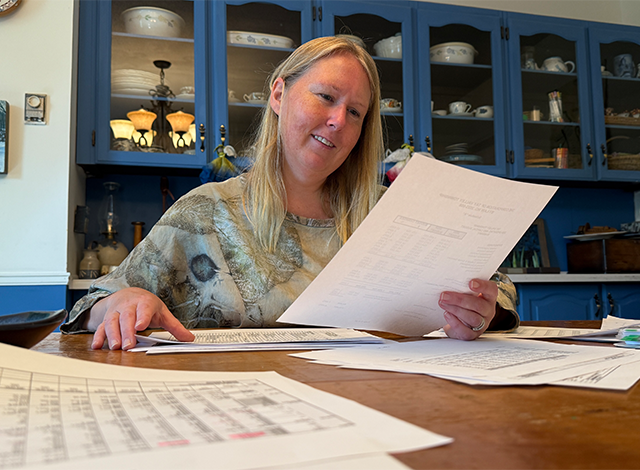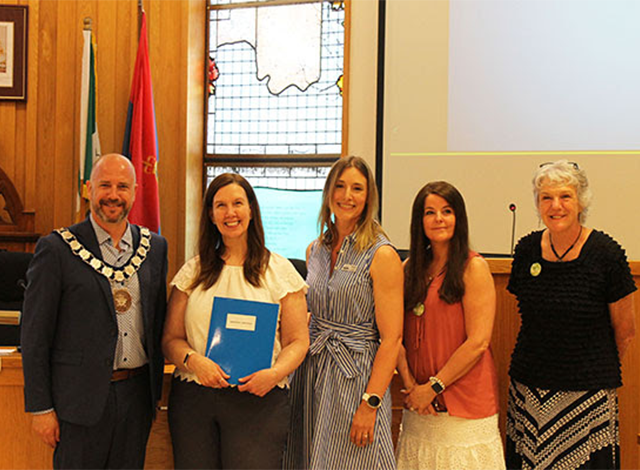Senior staff and Trustees with the Upper Canada District School Board (UCDSB) met virtually on Wednesday, July 22 to discuss the UCDSB Draft School Reopening Plan that will be submitted to the Ministry of Education on July 27. This meeting was broadcasted live for the public, and the recording can be found here.
The UCDSB Draft Reopening Plan outlines three different scenarios for delivering student instruction, as per the direction given to all school boards across Ontario by the Ministry of Education on June 19. The scenarios are as follows:
- Scenario 1: a regular school day routine with enhanced public health protocols;
- Scenario 2: an “adapted” or modified school day routine based on smaller class sizes, cohorting and alternative day or week delivery; and
- Scenario 3: distance learning / at-home learning with ongoing enhanced remote instruction.
“Our focus as a school district has been to create a plan that is safe for everyone involved. It is the preference of our district to prepare for a full return of all students to regular classes, five days per week, should it be deemed safe to do so by the local Chief Medical Officers of Health,” explains Director of Education Stephen Sliwa. “However, should the Ministry and local health officials indicate that it is not safe to proceed with Scenario 1, our school board has developed a comprehensive plan for an adapted model and has taken steps to improve our distance learning model, as distance learning is already a reality for many of our secondary and adult learners.”
Scenario 1, which has all students back to school, five days a week, includes increased health and hygiene measures such as: wellness centres in schools where students and staff can isolate should they fall ill during the school day and cannot leave right away; an emphasis on hand hygiene through signage, direct teaching, and hand hygiene stations; measures to limit close and casual contact for staff and students within the classroom and school; and frequent cleaning of high-touch surfaces.
Scenario 2 calls for a combination of in-class and at-home learning. Students in Kindergarten to Grade 8 would attend school in cohorts, three days a week one week and two days a week the next. Students will be able to connect with educators for distance learning whenever they cannot attend school in-person.
At the secondary level, students would continue with a full course load (four courses per semester) and will attend school on alternating mornings from 8 a.m. until noon. Students would have 105 minutes of face-to-face instruction in each course, in a four-day cycle. This half-day model will allow classroom teachers to engage in daily synchronous online support each afternoon.
“We know that the adapted model is not the preferred model for working families, and it can lead to confusion that comes with children not having a regular routine, among other things. However, we respect the direction of the Ministry of Education and we understand that we need to be nimble and be able to react to situations should the public health situation change,” says Sliwa.
Scenario 3 is a distance learning model that builds on the model that was in place during the school closure period from March 16 until June 26. The surveys done with students and parents in May 2020 and June 2020 provided the UCDSB with feedback on how to enhance and extend the current distance education delivery model. As a result, the following actions are underway:
- Microsoft Office (including email, Microsoft Teams) and the provincially supported learning management platform D2L-Brightspace will be the exclusive platforms used by staff as the foundation for communication and digital learning (including synchronous learning commitments) with students;
- A range of training opportunities and self-study resources have been made available to all UCDSB staff and subsequent training opportunities will be available through our “Summer Institute” staff development sessions in August 2020;
- The creation of a Distance Learning Support Team within our TR Leger School of Adult, Alternative and Continuing Education, in collaboration with the UCDSB’s Teaching and Learning Department, as this arm of our school board has been facilitating distance learning for six years;
- The purchase of an additional 1,100 mobile PC devices for student use and the planned procurement of an additional 1,100 in the 2020-2021 operational year; and
- Continuing to explore opportunities to provide UCDSB families without internet services to be part of a pilot project through the Kajeet hotspot solutions.
“It is our hope that all students will be in class for the first day of instruction on September 4, however if we are told otherwise by the Ministry or local health officials that it is not safe to do so, I think the plan we have drafted has put us in a position to still address the learning and mental health needs of our students,” says Chair John McAllister.
At the end of the meeting, Trustees passed a motion to contact the Ministry of Education in writing, advising that Scenario 1 is regarded by the Board as the only suitable option for students in the Upper Canada District School Board and that they encourage the Ministry of Education to enable this outcome for our students. In that letter, the Board of Trustees will also request that additional funding for any incremental costs be allocated to school boards for operating this program model.


















